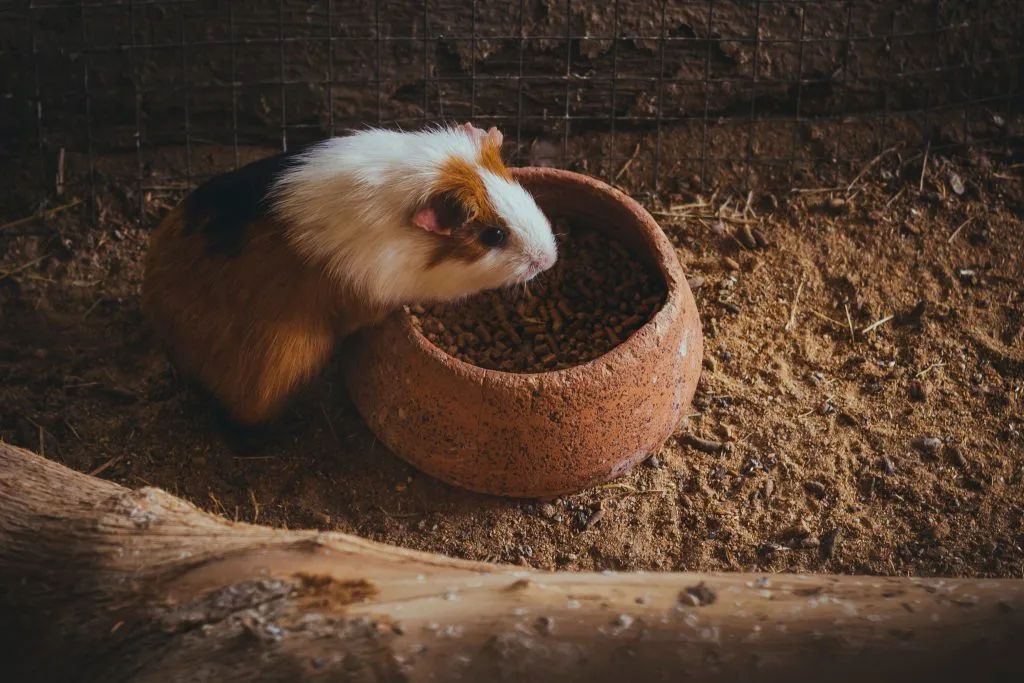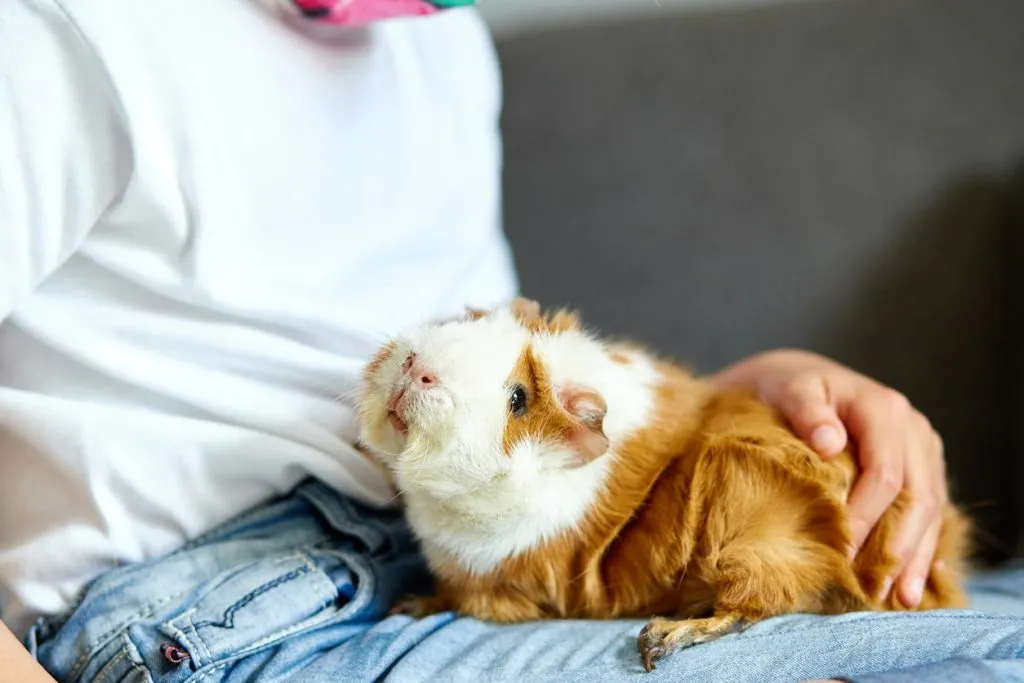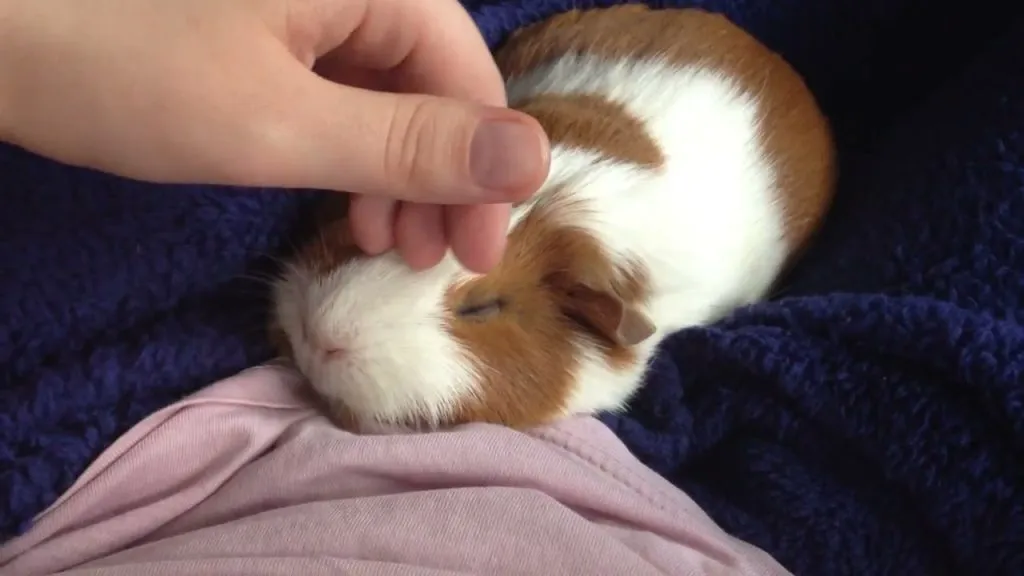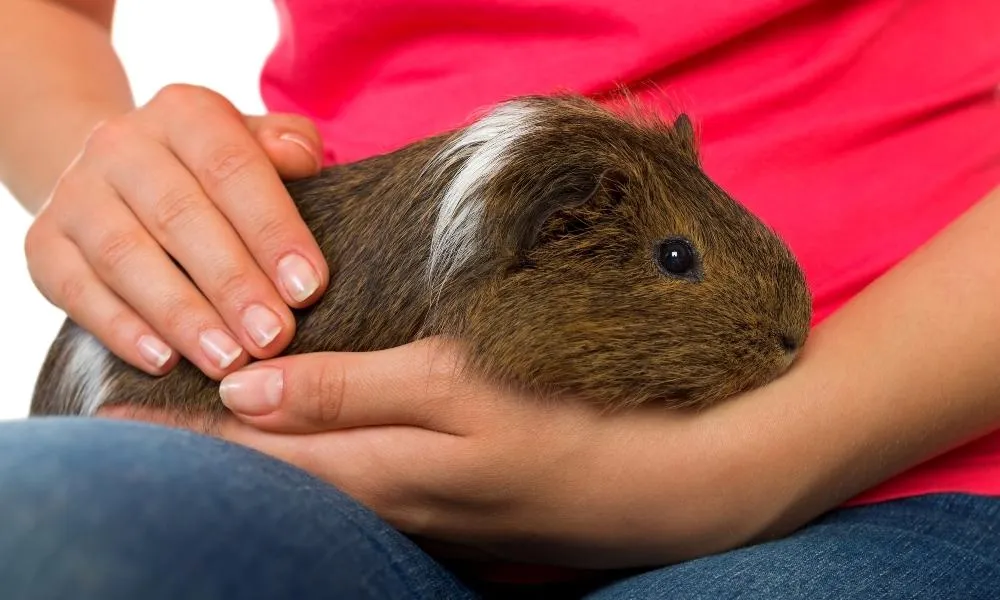Guinea pigs are very sensitive animals. In fact, you may ask the same question about whether guinea pigs are ticklish or not.
Generally, most guinea pigs are ticklish in nature. Their belly, neck, back, and chin are more sensitive than the rest of their body.
However, since guinea pigs are small and sensitive animals, it is important to know the exact places where you can tickle them.
Remember: Tickling in the wrong spots can lead to discomfort.
In this article, you will know the best spots that you can tickle and the signs that your guinea pig likes being tickled. Read the full article to know it in detail.
Table of Contents
5 Best Tickle Spots for Guinea Pigs
Chin
Under the chin is the best place to begin tickling your guinea pig. I have found that this is the part of the body that the guinea pigs enjoy the most.
One thing to note is a guinea pig’s chin is very sensitive.
If you plan to tickle your pet, make sure that he’s in a relaxed position. This is because, for some guinea pigs, this might not be a suitable place to be tickled.
Another great spot to tickle your guinea pig is the neck.
Neck

It seems that numerous guinea pigs have a preference to be tickled on the neck.
Since this area is sensitive, the majority of cavies enjoy having this area stroked, tickled, and petted.
If you put some effort into tickling this area, I am confident that your adorable and cuddly pet will appreciate it to the utmost.
You will find them purring or reaching out to snuggle if they love getting tickled on their neck.
However, if your pet shows any sign of discomfort or irritation, you can try another tickle spot like the head.
Head
Another good tickling spot for your guinea pig is the head and the area between the eyes.
If you tickle this spot, they will begin to relax and eventually close their eyes, becoming very calm.
It’s such a wonderful feeling when your pets relax and trust you when gently tickled.
After you have their trust, you may look for more sensitive areas like the underbelly.
Underbelly
Guinea pigs also like to be tickled on the underbelly side.
Guinea pigs have particularly delicate skin covering their bellies.
When you tickle the belly, you could hear them cooing or making happy noises as they respond to your tickle.
However, be sure to read their body language and find out if they are fine with you touching their bellies before you start tickling.
The first time you tickle your pet, it should be on their bellies. You can also try the nose area.
Nose
Tickling their nose is something that many guinea pigs find really enjoyable.
Simply, the guinea pig on your lap and start tickling the nose very gently. Make sure to tickle gently and not for a long time.
They frequently get a lot calmer when you stroke their nose in a gentle manner.
However, stop immediately if your pet feels uncomfortable.
Signs That Your Guinea Pigs Like Tickle
It is good to master your pet’s body language. This will help you know if your guinea pig is enjoying the tickling or is just annoyed.
Here are 3 clear signs that your guinea pigs like to be tickled:
Flopping Down
It’s possible that your guinea pig will flatten out like a pancake when you tickle them.
They flop their entire body when they are extremely relaxed. This is their method of expressing the sentiment, “Let’s try it again!”
Squeaks and Wheeks
The squeaking and wheeking are other signs. This sounds very much like the sound that your small pets make when they are expecting a treat or when they hear the crumple of a paper bag.
So, while tickling, if they make the same wheeking sound then it is because your guinea pig is enjoying being tickled.
RECOMMEND READING: 7 GUINEA PIG NOISES AND WHAT THEY MEAN
Closing Eyes
Closing their eyes is the highest level of relaxation you can see in your guinea pig. Generally, guinea pigs are very active. They will never sleep with their eyes closed unless they are content beyond all measure.
So, if you see your guinea pig closing its eyes, this means that your pet trusts you and is at ease with your tickling.
Signs That Your Guinea Pigs Do Not Like Tickling
Not all guinea pigs like to be tickled. Some may feel discomfort or may get afraid.
Here are 3 common signs you should keep an eye on:
Tries to Run Away
You tickle their chin area or underbelly and suddenly they leap up and try to run away from you. This is a fairly strong clue that they don’t like what you’re doing to them.
If your hand is forced away from its face by a kick or a butt, you should probably stop what you’re doing.
On the other hand, some guinea pigs may stand still when in discomfort.
Remains Absolutely Still
When guinea pigs are startled and afraid they stand still. They completely freeze their body. Because guinea pigs do this as a defense strategy in response to fear and discomfort.
So, it might be difficult to determine whether or not your guinea pig is genuinely ticklish or simply afraid of you.
Hence, look for other signs like purring.
Purring
Guinea pigs purr when they are in discomfort. Guinea pigs are capable of doing it whether they are feeling joyful or irritated.
Therefore, you have to look for other body language signs too. And then ensure that this purring sound is out of happiness or discomfort.
How to Tickle a Guinea Pig in 5 Simple Ways!
By following these instructions, you will be able to show some love for your small companion.
#1 Put Them on Your Lap

The best way to start tickling your guinea pig is by taking it on your lap. Your small pet will have enough space on your lap.
Furthermore, you will have a good grip on its body if you place your guinea pig on your lap. Also, don’t forget to be gentle with your tickling.
#2 Be gentle

You don’t want to cause them any harm, do you? Use the same method that you would use when tickling a guinea pig. This is to move slowly and easily while using lovely, lengthy strokes.
Your guinea pig will better understand that you are not attempting to harm them or force them to go away.
#3 Focus on the Following Spots
The chin, the top of the head, the bridge of their nose, the upper back, and the area around their eyes – are the most ticklish areas on your guinea pig’s body.
But remember, every guinea pig is unique. It’s your duty to find out that particular ticklish spot for your pet!
Experiment with care to determine what it is that your guinea pigs enjoy so that you can develop a loving relationship with them.
#4 Interact with them
Allow your guinea pigs to become accustomed to the sound of your voice and to correlate that it’s you who is tickling.
It will give your pet the confidence that it is in safe hands and it will become comfortable.
#5 Stop if Your Guinea Pig Shows Discomfort
Stop tickling them if they show uneasy behavior (e.g kicking your hand off).
If they show signs of becoming restless, upset, or annoyed, you should avoid touching them for a while so that they can calm down.
As a guinea pig owner, you have to understand when your pet wants to be tickled and when not.
Final Thoughts
To conclude, guinea pigs, like humans and dogs, do like tickling. Guinea pigs will typically respond well to being tickled if they are in an environment that is comfortable for them.
In this article, we get to know that spots like their chin, neck, and underbelly are the best to tickle them.
However, If you are not familiar with the body language of your guinea pig, you can misunderstand this behavior for the guinea pig being ticklish.
Hence, you must know the signs of their happiness and discomfort while being tickled.
To know if your little pet can feel your love on being tickled, don’t miss reading Can Guinea Pigs Feel Love?
